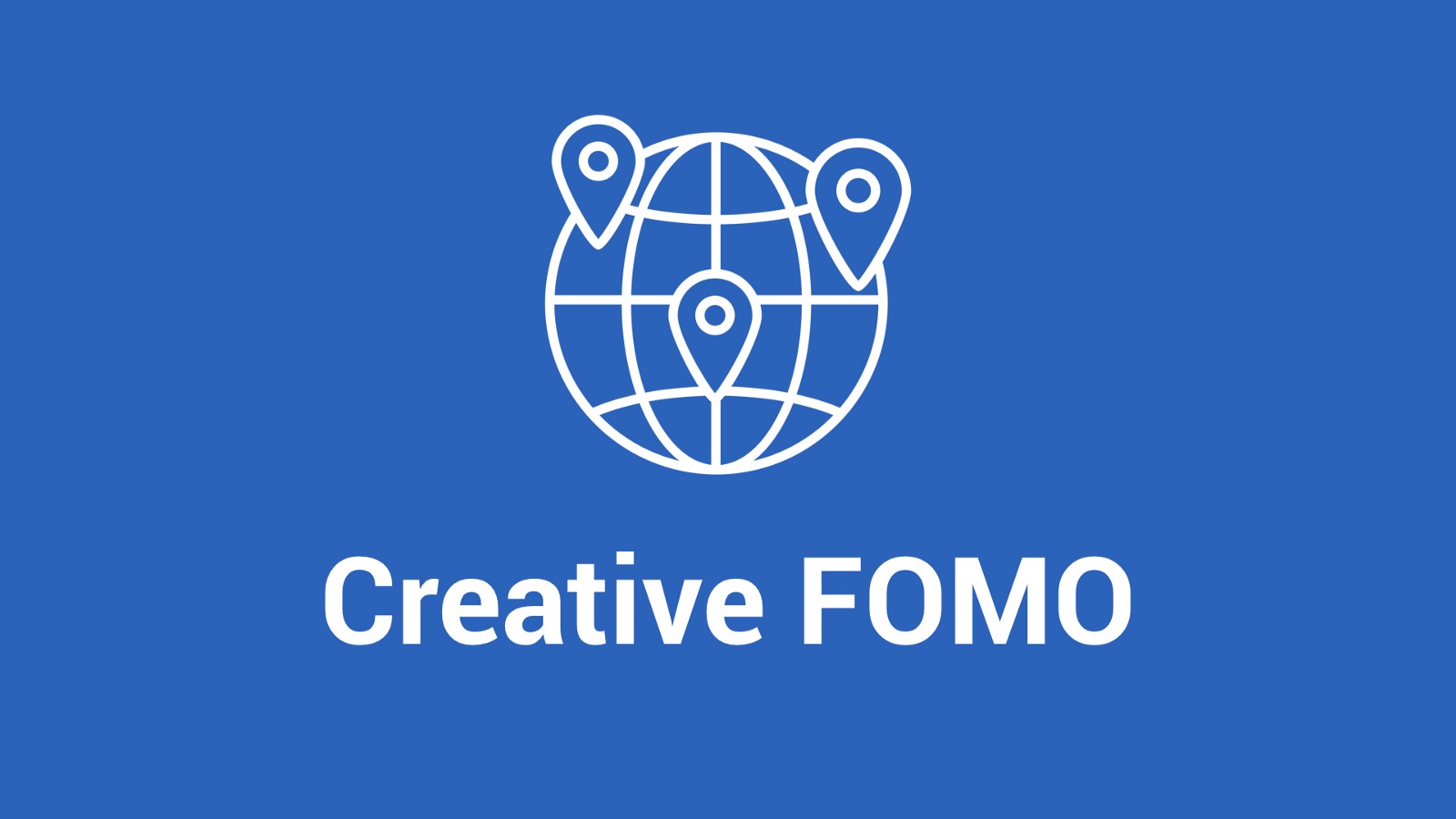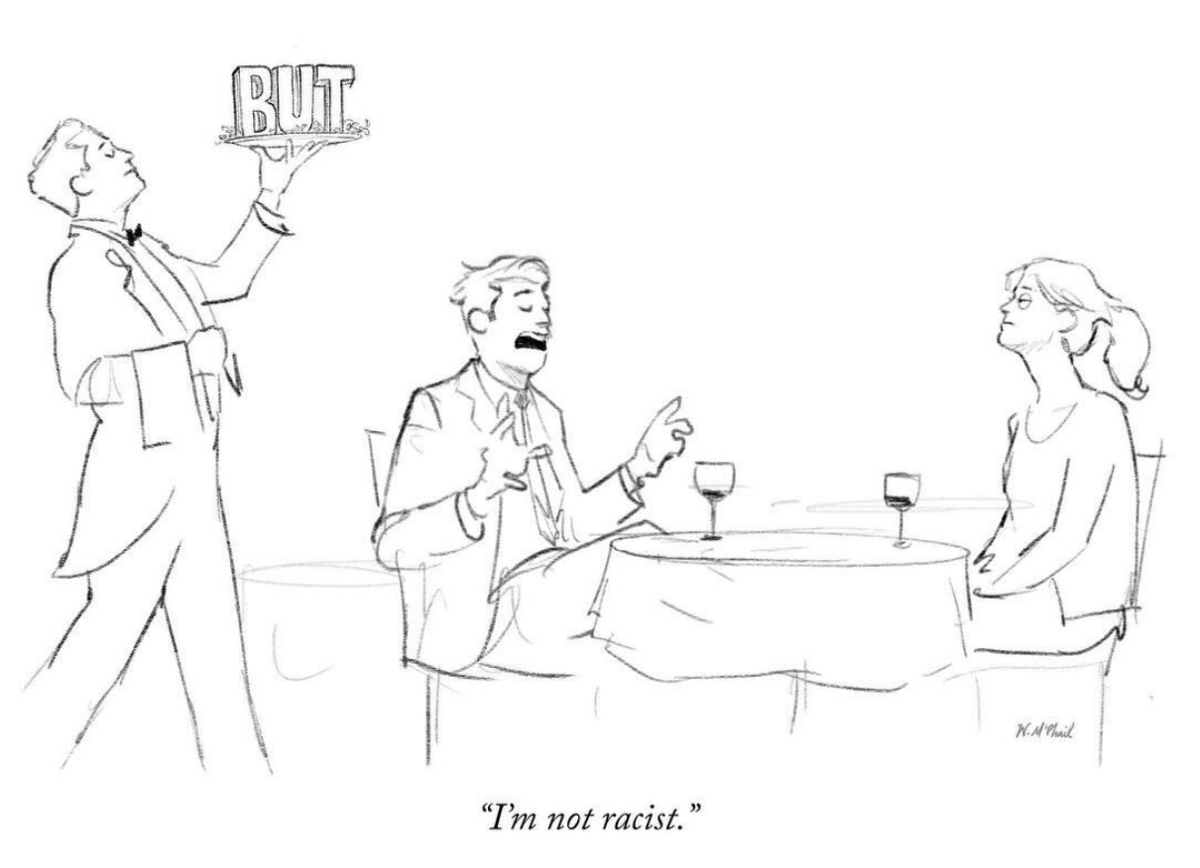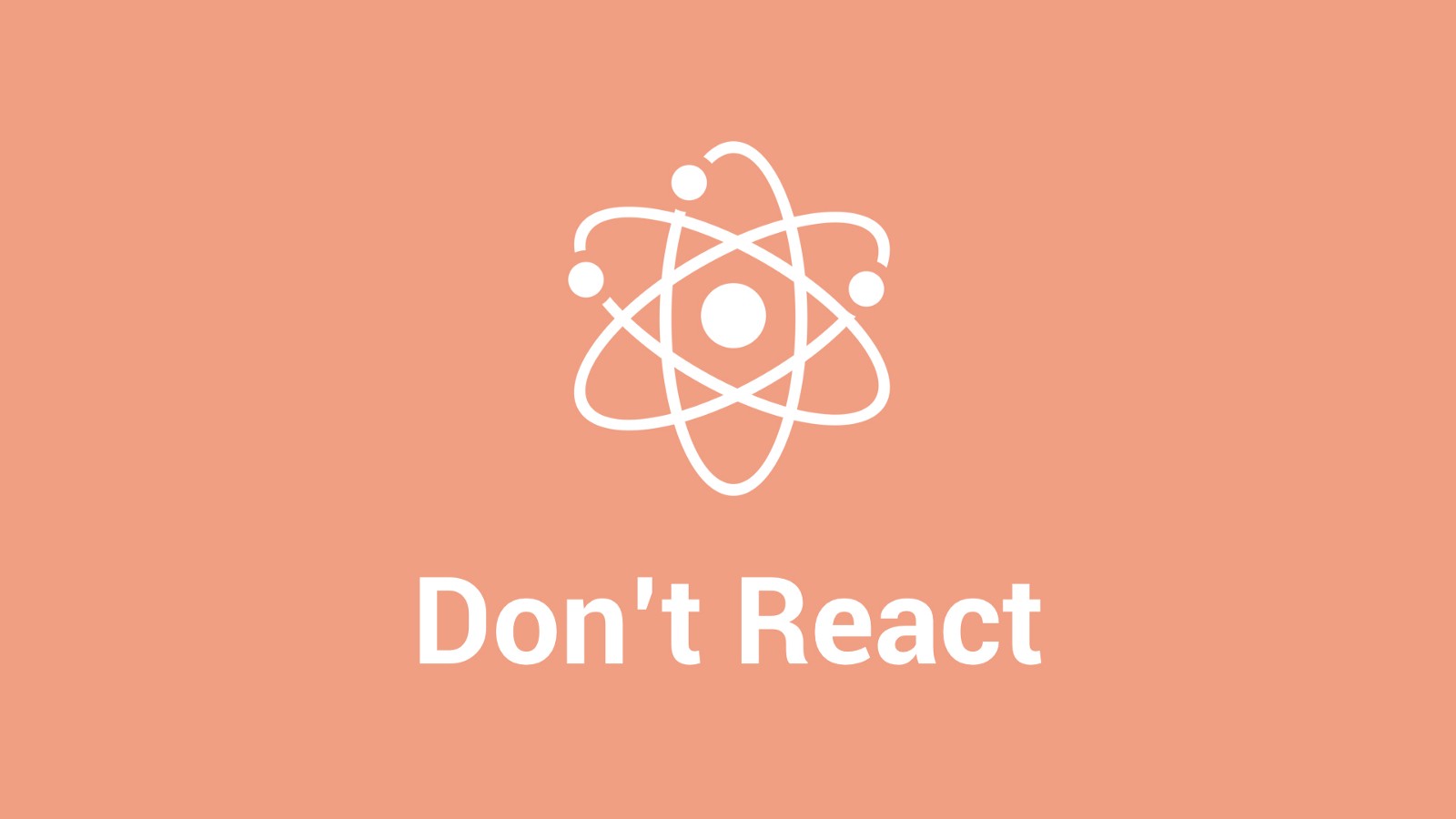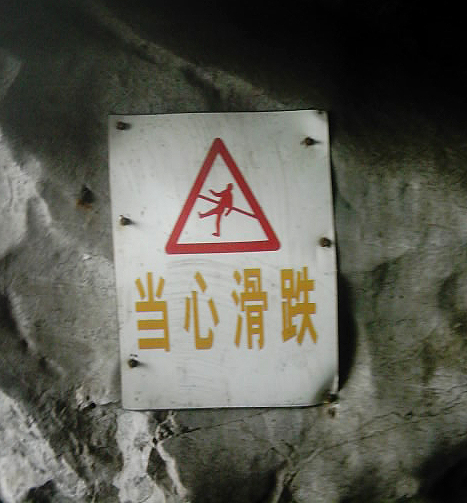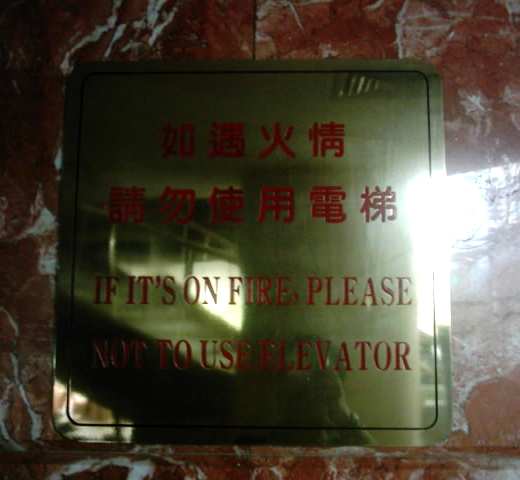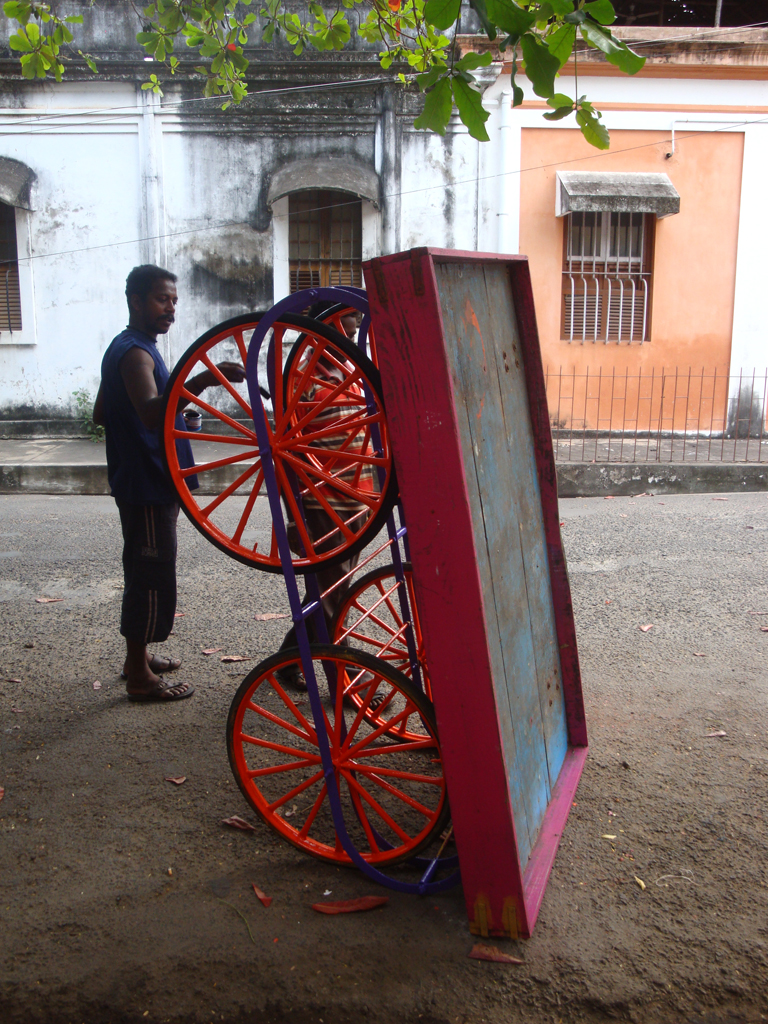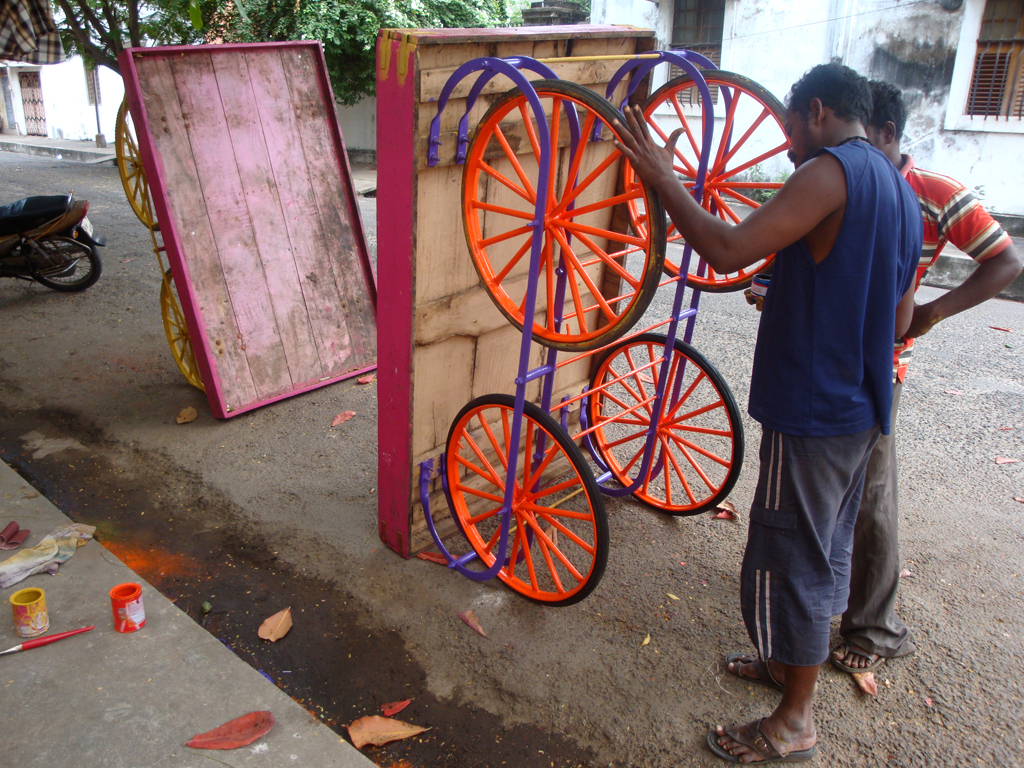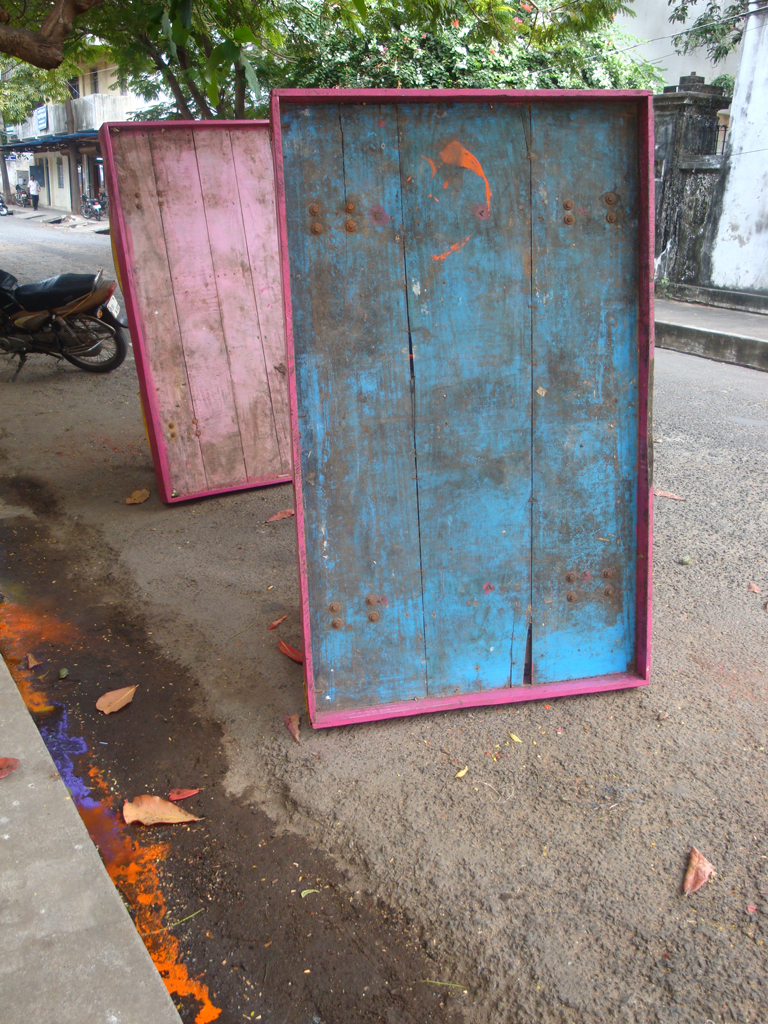UX principles - Is it all just fluff
I used to think that UX principles were a bunch of fluff without any substance. I was Startup Aditi on a metaphorical rocketship. Let’s just go faster! I thought.
I used to think that UX principles were a bunch of fluff without any substance. I was Startup Aditi on a metaphorical rocketship. Let’s just go faster! I thought. I had already helped build successful products and businesses over a 15 year career in product design. For e.g. I’ve worked with high growth, successful SaaS companies like Calendly and Postman before they became successful and famous.
And what I’ve seen is that it goes really, really fast with small lean teams of 20 people who know what they are doing. These products that we built are being used by millions and doing really well today without writing any fluffy principles. So yeah why do we need UX principles anyway?
4 yrs ago my perspective changed and I started to learn about UX principles.
So today I want to share some practical stories and examples on how UX principles can help you in your day to day life as a designer or product person. This is a long form visual essay so you can jump to a section or scroll the entire thing whatever works.
Jump to:
One of the things I used to think as a design leader- why try to get the principles right when you can just ship, ship, ship and learn from reality about whether the product worked in the real life market.
The reason I was skeptical. Is that whenever I had encountered principles before, there were usually hung up on office walls and posters and didn’t really influence how we worked on the real product or our process. These cool sounding principles were in our presentation decks to investors but not used in projects.
There were really nice and inspiring, but they weren’t really useful when it comes to real outcomes
What is a UX Principle
A lot of my initial skepticism started from a misunderstanding of what a UX principle was. Values and principles are often spoken of in the same breath so let’s first understand the difference between these two things.
Values are qualities or standards of behaviour. They help us form principles. Principles are rules or beliefs that govern our behaviour and they are based on values.
Values are more subjective and spark conversation. Principles are more strict, like rules or guard rails.
For e.g. Honesty is a value. A strict principle based on honesty is “Don’t ever lie, not even to prevent harm.”
Examples of company values and principles
Another example of values are these UX values from Shopify, which you can find on the Shopify Polaris design system website. The values are: considerate, empowering, crafted, efficient, trustworthy and familiar. These values are subjective and spark conversation. They are a lens through which the UX team at Shopify can critique and discuss their work.
My diagram is based on an illustration from here
So you can have these personal values and principles at an individual level and then you can have product values and principles which help guide a team or an organisation or a company like Google or Apple towards a specific direction.
The principles we are talking about today are the values and principles around how to build product and design things. We are not talking about your personal values & principles here.
Don’t make me think! This is an example of a product principle from Slack. They have crafted 5 principles based on their product philosophy as an organisation and this is one of them. It’s an important rule that guides how their product organisation makes things
So the 5 principles or rules are distilled down to:
Don’t make me think
Be a great host
Prototype the path
Don’t reinvent the wheel
Make bigger, bolder bets
Having just 5 concise rules makes it very clear what Slack’s product org values and how they think about software design and development. The fact that these are the 5 principles and not any others tells us a lot about what this organisation values and how they want to function when they are designing software.
Another example is this design principle from Apple for iOS. Direct manipulation of onscreen content through gestures, people can see immediate, visible results of their actions.
Facebook had a principle to move fast and break things. Eventually they changed it as the company changed and that’s okay too.
I really like this set of design principles by Intercom:
Connected modular systems
Opinionated by default, flexible under the hood
Follow fundamentals
Make it feel personal
What you ship is what matters
My favorite one is - Opinionated by default, flexible under the hood. What this means is that they optimize their designs to feel simple and opinionated by default, but progressively reveal power and flexibility.
So this is the full picture I’m painting here. We have values, on top of which guiding principles are created. Decisions in a team or an organisation are made based on this foundation.
Principles can be product principles, UX principles or both.
Don’t forget, the way I’m talking about it here is that everyone works on the product. It doesn’t matter if you are a designer, data person, product person or engineer - every person is working on it in some way or the other.
So principles are super foundational.
Difference between product principles and UX principles
What about the difference between product principles and UX principles? One way to see it is that product principles apply to everything in software development but UX principles are more specific to our craft as designers.
Both are foundational principles and guard-rails, they just look a little different.
So to summarize,
A UX principle is a guiding rule or a guard rail based on an organisations values.
A value is more subjective like “Simplicity” and a principle is a more specific, stricter rule based on that value like “Short beats good.”
A principle is foundational - it can be either a product principle or a UX principle or both.
It can be a foundational tool for your design approach - its not all fluff, at least that’s what I’m trying to convince you of :D
What I’m trying to convince you of is that a UX principle is a tool. It’s one of the many tools in your skill set as a designer. It’s not just a bunch of fluff :D
6 signs you need UX principles on your project or team
Lengthy, repetitive debates and,
Passionate, spicy topics and themes
A common situation is that there are lengthy debates about design decisions in your team, which often repeat themselves in topic and theme. Maybe even some spicy debates, topics people are really passionate about like data privacy.
Okay time for a story and a detail project level UX principle example.
My team was designing a modal that helped Shopify merchants choose their data preferences when they installed an app. This was a tough challenge because of the natural tension between privacy concerns and the merchants need to share data for various features to work properly. The choices they would make would impact how their app functioned and would impact their bottomline, sales and GMV.
How do we communicate to the merchant so they can make the best decisions, without bombarding them with too much technical information?
So my team came up with this principle which is - data sharing is a preference, not a technology choice.
Let merchants choose their comfort level, rather than a specific technology. This helps merchants make an informed choice, without having to understand technical jargon. It also future-proofs their choices, and lets us add new technologies that match their preferences
This is a product principle and a UX principle.
It has helped us make so many design decisions since then and continues to be useful today. We have also shared it with our partners to help them understand why we don’t want to say “server side apis” in all our content design materials
3. Complex, large org structures
Multiple teams with multiple layers working together need to communicate their specialised knowledge and decision making patterns. For e.g. we understand intercom or Slack a bit more now that we know how they approach their decision making for their product. That’s an entire org of 100s of ppl that we know a little bit more now
4. Fast growing team
Another sign you need UX principles is - your team or org is growing super fast. New ppl are like what’s going on.
Remember Startup Aditi? I didn’t need UX principles because we were working in small lean teams of 20 people. We were working closely with founders all sitting in the same room. Everyone implicitly understood our goals and absorbed ways of decision making. The moment you scale into huger orgs though, you have to communicate this stuff somehow.
5. Remote work and normal working hours
Tbh. I didn’t need UX principles because I was working 16-18 hrs a day in the office LOL. When we are working remotely and healthy work hours we need other ways to communicate our decision making patterns. Instead of just getting on a call every time a discussion needs to be had.
In a more mature team you want to be able to communicate decision making patterns async instead of “jumping on a call” and interrupting everyones work every time a tough decision needs to be made :D
6. Product team or RnD team
Another sign that you may need UX principles is that you are a product or RnD team.
A product team or an RnD team needs principles. If you are an execution focussed feature team, you don’t need principles that bad because decisions have mostly been made already. So principles are important for teams that are driving their own ship and choosing their own path.
So to summarise, you probably need UX principles if:
You’re having lengthy repetitive debates
Passionate, spicy hot topics keep popping up
You’re a fast growing team and new people want to contribute quicker
You’re in a remote work situation
Or even if you’re in a complex large team structure, cross company collab
Again, principles are important if you’re a product team, not if you’re a feature team
How UX Principles help you and your org
Design principles helps us make decisions, and reflect how we process information and how we communicate. Instead of focusing on the technique and process of design, we want to focus on design principles here.
A good UX principle is not open to interpretation. It’s specific, concise and contextual. This provides helpful guard rails for the team. People need this guidance, they don’t need another debate.
A UX principle can be emotional and inspiring. So it helps the team connect with goals, values and decision making patterns in a meaningful way.
If the principle is high level, it may also help the design team connect with the company’s brand story.
This is the famous owl meme. As creatives a lot of times we are asked to draw an owl in this way. We may have some initial direction of draw 2 circles. Then all the other steps have to be filled in by us. Good UX principles are tools to help you and your team along the way :D
A UX principle communicates how your team thinks so it can help with alignment across complex org structures. For e.g. when it came to this principle around data sharing as a preference, it helped us align with multiple teams and functions including our external partners outside Shopify.
When using these principles with partners, it’s not always smooth going. However it helps spark an important debate and conversation that helped us either strengthen our principles or come up with alternative tactics to work with other teams.
Reframing: Exposing our project principles to other teams and companies helped us reframe the principles and improve on them faster whenever needed.
In many ways this underlines the philosophy that design should start with words.
Before jumping into the UI we should think about how we want to approach the work and articulate it and get alignment.
How to write UX principles
Tips on writing UX principles and improving your current principles
1) Investigate your decision log and run UX retros
First write down all the tough decisions your team has made recently. Most teams have a decision log you can refer to. Identify all the decisions that didn’t immediately come from existing principles and missions you have articulated already. This is where your principles will come from.
Your principles should be the bridge and fill the gap between the high level vision, the 10,000 foot vision and the day to day design process.
2) Test your principles with other teams to check if your framing is truly helping to settle debates and communicate your intentions in a way that connects with the values of the company.
So for e.g. every time we went to different teams with our project principles, we got excellent feedback on how we could do this better.
One way to test is to write the opposite principle and see if it makes sense. For e.g. the opposite principle of
“We create a seamless experience” is:
“We create an erratic experience”
Hmm not so helpful lol. Make sure your principle is actually very specific and helping the team make decisions during tough, repetitive debates.
3) Take a writing course, hire a writer and generally get good at writing. Really good framing and articulation is essential.
Consider project level principles first, start at a smaller complexity level before trying to change your entire team. One baby step at a time. If we can come up with principles that reflect the company’s values, and help our teams make better decisions, only good things can come out of it :D Maybe I sound too idealistic saying that!
Summary
A UX principle is not all fluff!
It’s a guiding rule that informs our design choices
These concise, specific guidelines are tools that can help mature, product teams settle repetitive debates, communicate vision across complex scaling team structures and help people understand their decision making patterns
You can write UX principles by investigating your decision log, running UX retros, testing with senior stakeholders, and getting better at writing.
Most importantly, these UX principles should be fun and help inspire the team and make things easier for them during tough decision-making times.
Thank you so much for reading this far! I would love it if you could DM me on Linkedin your favourite UX principle - from anywhere on the internet, your favourite company, any projects you’ve worked on.
It’s okay if you’re not sure if it’s a UX principle or not. I would love to hear from you!
This article is based on a talk I gave at the UX+ Conference in Manila in 2023 to 2000+ people.
Reference materials:
Navigating cultural complexity at work
Working in a team with leaders that acknowledge differences is like coming to an oasis after a lifetime of being in the desert. You can create this workplace oasis if you know how to navigate cultural complexity as a leader. Check out some practical tips
Working in a team with leaders that acknowledge differences is like coming to an oasis after a lifetime of being in the desert. You can create this workplace oasis if you know how to navigate cultural complexity as a leader
As a design manager I have managed teams across India, Japan, Australia, Europe and North America and I’ve also had the privilege of living across Asia, Africa, US and the UK. This makes me a bridge person - someone who is a bridge between cultures. And uniquely qualified to share my learnings and tips on how to navigate our differences. I hope this guide helps you and inspires you
This is a long form visual essay. You can jump to the sections below or just scroll to read:
Cultural differences are not so simple
So much information on cultural differences is overly simplistic and limited. One of the biggest mistakes leaders make is thinking it’s easy. This hubris is the beginning of bad policies. Here are some excerpts from the official corporate training I was given on how to interact with our American colleagues when we visited the US for work:
Strong smells are offensive to Americans. Make sure to avoid disturbing your western colleagues at lunch time
A meeting scheduled at 9AM starts at 9AM. Be there 5 mins early.
Don’t use the company’s phones to call your parents back home in India
Wow, so many assumptions to unpack here. This is what we were told as Indians visiting America for the first time for work.
I have a few more examples of overly simplistic cultural differences I want to call out.
They say that culture is binary (it’s not)
One culture is egalitarian and one culture is hierarchical
One culture thinks time is relative and the other culture thinks time is money
One culture is “free” and the other is “traditional”
One culture has small egos and in another culture everyone has big egos
But culture is not so binary!
Our cultural differences are rich, complex
These differences are difficult to decipher. This is okay. Let’s take the example of eating on a video call at work. One day I asked:
What’s everyones opinion on eating on a video call?
We were a group of people who worked together for a long time. And we were all surprised and curious by each others answers. Some folks were just not comfortable eating with their camera on, some thought it was too informal for work, some were practical and said better to get it over with if you’re having a busy day. Others were totally comfortable with it and hadn’t thought twice about it
acknowledge cultural differences
Acknowledging our differences is important. Celebrate them!
Working in a team with leaders that acknowledge differences is like coming to an oasis after a lifetime of being in the desert
Cultural differences are not a problem
What I’m getting at is that cultural complexity is not a problem to be solved. It’s a world we need to navigate.
When we switched to a digital first world during the pandemic everyone focussed on how to optimize remote work. They told us to overcommunicate, focus on work/life balance and we even tried to come up with new ways to have fun as a team. We discussed the new digital etiquette in meetings. For e.g. is it okay to eat on a video call.
When we add cultural complexity to a digital, remote world everything becomes even more layered. Earlier everyone left their home behind and came to a common space, The Office. In the office they absorbed office culture. This made it easier to communicate across cultures. However working from home means we were all in our homes, full of our families, our pets, language and food. We are embedded in our cultures when we work from home
Everyone is different - this was always true. However our differences become more visible in remote work. Some of us are caregivers, some of us have loud construction noises in the background. Others have kids, pets, parents, family needs, some are alone at home, some are in big houses with huge backyards and others in small apartments in big cities. Some want to eat hot food for lunch and others don’t mind a cold sandwich. Some can do flexible timings while others have to stick to strict schedules
In this situation it becomes more important than ever to bridge the gap
Bridge the gap to create a workplace oasis
When you do this you create an oasis. A space for everyone to be different and yet welcomed, a safe space.
A space where trust batteries are charged up to the maximum. More, better ideas are generated and people are more productive. The best ideas come from diverse teams that get along very well and work together for a long time. When you can navigate across cultures, celebrate differences and bridge the gaps - you create a workplace that encourages creativity and idea generation
To summarise:
Cultural differences are complex, not simple. In the media and everywhere we often limit cultural differences to oversimplified tropes.
I want to convince you that we should acknowledge and even celebrate cultural complexity. It’s not a problem to be solved
When we learn to navigate cultural complexity we create an oasis for creative people where more, better ideas are generated, faster
Okay so how do we create this idealistic oasis full of ideas!
Here are some tips to become a bridge person or...
How to bridge the gap
Being a bridge person is a bit like being a chameleon. I had to adjust and survive in so many different contexts and cultures that I got good translating between cultures. You can do this too!
I learned the term bridge person from Lola and Farai when I did a talk with them on Bridging culture in design on Shopify UX’s official podcast in 2022
There’s a bunch of effective strategies you can use to start becoming a bridge person and make your own workplace oasis:
Drive
You need to want to create the oasis. How willing are you and your organisation in making online and offline work spaces friendly to all cultures? This requires flexibility, persistence and engagement. Get confident and go for it!
2. Awareness
The second step is awareness. Your cultural intelligence is a result of how much you pay attention and learn from your every interaction. For example, I once got an email from an American client that said one word: “Great”
We had spent months working on an iPhone app and at the end of the project when we sent the final final version of the app across to Rob, our American client. His response was this one word email without a period or exclamation mark. The team was pained and confused because as a high context Indian culture we found it to be very abrupt and rude. All that empty space must mean something, right? We didn’t know if he was happy or upset with the work. Eventually we found out that he was actually happy and meant it in the most straightforward way possible. These incidents get added to my “cultural intelligence” as I learn more about a new culture. I don’t expect this blunt straightforward communication from every American. I’m aware there are complexities within American culture. However the next time I get an abrupt one word email, I won’t jump to conclusions. This is cultural intelligence.
Another way to increase your cultural intelligent is to know your bias. This is not a competition on who has zero biases. Everyone has some, let’s just get self aware. You can do all the tests here on the Project Implicit website by Harvard. It’s free!
3. Action
The third step is to take action. Adjust your verbal and non verbal behaviours based on the room. For me personally this is the hardest part. I sometimes feel like I have a lot of awareness but don’t always act on my cultural knowledge as well as I should
Something I struggle with personally is conversational styles. I have learned that my style of conversation is called cooperative overlapping. I found out about this through twitter at first and then clicked through to find this book on Conversational Style by Deborah Tannen.
In my culture, we often speak over the other person before they have finished speaking. This isn’t to be rude or interrupt the other person but it’s a signal of enthusiasm and interest in what the other person is saying. I’m adding on to you what you are saying because its so engaging and exciting. It’s called cooperative overlapping
Cooperative overlapping conversation style is found not just in India, but in some other south asian cultures as well as mediterranean cultures - and even in New York!
However if I do this to someone from another culture they will view this as a sign of disrespect. A lot of cultures take turns speaking, and depending on the culture there are comfortable pauses between each person who speaks.
The action I took for this - is to make space for turn takers and overlappers. Although I still struggle to this day I observe the group and do my best to balance my interrupting enthusiasm with turn taking.
Another thing I’m learning to do is to interpret silence correctly. In some cultures, silence demonstrates that you are attentive and engaged. In others, silence indicates disinterest. If you’re from a culture that uses silence to show engagement, you might need to “jump in” faster. If you’re from a culture that shows interest by interjecting, you might need to pause more often.
To summarize:
So first is drive - get motivated
Second is awareness - develop your cultural intelligence
Third is action - Adjust your verbal and non verbal behaviours
The fourth step is to get comfortable with ambiguity. Which I think should be a bit easier for creative people, designers and this audience
And get a sense of humour!! :D
The fifth step is to create your personal blueprint. Write down what it’s like to work with you, your communication preferences and your preferred work-times. Write as much detail as possible and share it with your entire team.
Your blueprint will help others navigate and work more easily with you
This is a ways of working map
Blueprints and maps help people navigate
Get your team to discuss how they like to work so they can learn more about each others differences and appreciate them. This will help people become more self aware of what they prefer and be able to create their own blueprint.
The sixth step is to identify an official ops person who helps communicate between teams in different cultures. If the gap between the teams is too wide this person (preferably a bridge person) can maintain harmony and provide a safe space for discussing issues on both sides
That’s it! If you reached all the way here, omg thank you so much for reading!! Please add your own stories about inclusive and not so inclusive spaces in the comments below
To summarize (again):
Today I shared some of my stories and thoughts on navigating cultural complexity at work. People view cultural differences in simplistic, limited and stereotypical ways. However, culture is complex and acknowledging differences is key. Working in a team with leaders that acknowledge differences is like coming to an oasis after a lifetime of being in the desert. Cultural complexity is not a problem to be solved but a beautiful world we need to learn how to navigate.
Building an inclusive space for different cultures creates a creative, innovative productive space for more ideas and idea generation. But how do we build this inclusive space across cultures?
You can create these inclusive spaces by:
First, getting motivated to do this
Second, getting aware and learning from your every cross cultural interaction.
Third, taking actions on verbal and non verbal behaviours. For e.g. I became aware of my conversation style called cooperative overlapping. And then I worked to make space for others based on this. Become a bridge by slowly learning more with every cross cultural interaction
Getting comfortable with ambiguity will help you get better at this and assume positive intent during miscommunications
Design your interactions by using blueprints, frameworks and tools so that people from other cultures around you can understand how you work, and how you communicate. Making it easier for people to navigate across cultures
[This article is based on a talk I did at Design Matters Tokyo in May 2022]
What I learned from listening to 40 product leaders from South East Asia
Networking has become a bad word.
Networking has become a bad word.
It means saying “So what do you do?” repeatedly and superficially at after work meetups while half-listening to a speaker talk about their work.
I’ve faced my share of superficial conversations. As a frequent outsider at these events, I spend at least 3 to 4 mins of a conversation looking at the puzzled face of the person I’m trying to talk to as they try to repeat my foreign-sounding name awkwardly or try to parse my accent.
It doesn’t have to be like that. Meeting people from your industry can be meaningful and conversations can be real.
Arriving in Ubud, Bali for a 3 day retreat with 40+ product people :D
I recently spent 3 days in Bali listening to personal work stories from 40 product leaders, founders and cofounders from Singapore, Indonesia, Malaysia, Australia and HongKong.
This is what I learned:
Everyone is struggling to make their work meaningful
I met Dan and Jo from Hong Kong. They’ve been working on a solid, actionable framework for Making Meaningful Work or MMW for more than 20 years. It was inspiring to hear their story.
After three short sprints we came up with an initial framework of ideas for working with our teams with a lot more heart.
I found several people in the group who hate the term “soft skills” as much as I do. The term soft skills is just a horribly dismissive way of talking about the most important part of leading a team — being human, listening and caring.
The focus was on actionable, positive things to do for your team. And how to develop healthier, sustainable and more meaningful ways of working.
“It doesn’t have to be crazy at work.”
It really doesn’t! We aren’t machines that can be equally productive every day, every week and every year.
You’re not a car that can always “go the extra mile.”
Level 4 listening is hard
Going from factual listening and downloading to deeper empathy and generative listening
We’re continuously distracted by smartphone notifications from our friends, family and work.
I’m frequently tapped on my wrist by my Apple Watch, reminding me to stand if I’ve been sitting too long.
Michael put up this sheet early on during the event, telling us to try and practise Level 4 Listening. With a stranger that’s tough, and in todays tech world, that’s even harder.
As a designer I’m formally trained in empathic listening. But listening and being empathic during a 2 hr usability interview and doing it constantly is a different thing.
Empathy only takes you to Level 3 listening
For example, I listened to a hiring manager talk about how they judged someone for leaving jobs every year or “job hopping.” And later regretted it.
Level 3 listening means you can hear their story with true empathy, leave your self and your judgements out of it, truly feel the other persons anxiety and point of view.
Level 4 listening is more generative. You build on base empathy with a deeper sharing of ideas and feelings. You swap stories. For example, I shared a story of my own personal bias during hiring, and when I realized it. It’s important to avoid jumping directly into solutioning during this level of discussion. Just reflect, share and listen.
I’m not the only one with Creative FOMO
Fear of missing out for creative people
What is creative #fomo? The feeling that out there, there is a better and sexier product and a more genius team that you can work with.
Where you can do better design things in a better way.
I’m always looking for people with good taste. I’m always in a #fomo about doing better and better work.
It was heartening and validating to hear similar self doubt from non-designers. Though it did take some time for people to open up about it.
It’s about people, not processes
After a number of years of experience, all leaders from all fields reach this same conclusion.
People are so important!
I think this tweet sums it up:
Deep, meaningful conversations means you cannot avoid the other persons politics
Comic by Will McPhail
Keeping things polite is impossible in a group of 40 people in Bali trying to practise level 4 listening and sharing and spending all their free time together.
It’s okay to have uncomfortable or even hurtful conversations or to be in groups of people where people have sexist or racist beliefs — that’s reality.
Really listening requires suspending your own impulse to correct, to dismiss, to shut down. Navigating this is a challenge, because you don’t want to betray your own values — but you want to give people enough space to open up and feel comfortable having their opinions challenged and scrutinized.
P.S. This is for work. This is putting other people’s feelings ahead of your own, and it’s important to be mindful of why you’re doing that. You are getting useful insights and you have a goal, but it shouldn’t become your default way of operating. That isn’t healthy.
Do by not doing
I learned a bunch of Chinese sayings during the retreat. The one that stands out is Wu wei or 无为 — which loosely translates as “Do by not doing.”
An important part of being a leader is to know when to let things resolve themselves.
Reacting constantly is probably going to make things worse.
A product manager from the retreat shared a personal story on Day 2. A problematic person in another department was making trouble and creating a negative atmosphere in that department, which was affecting his own work, his team and his timelines. Although he tried for weeks to “fix” this, eventually the problematic person left for unrelated reasons.
The problem resolved itself on it’s own.
A startup is like a sinusoidal wave pattern, just get to the next wave
(A fancy way of saying there are ups and downs and thats ok)
Finally, reach out to your community and be open to people reaching out to you
A solid support system is key to thriving in your industry.
How do you reach out? A lot of people just aren’t sure.
We’re consumed by “busy-work” and miss out on real connections around us. It’s easier to just coast through meetups without having a deeper connection and its easier to avoid truly listening to the other person.
If you look around you, its amazing to see so many people willing to reallyhelp you and talk to you.
All you need to do is be open and vulnerable to that connection.
TLDR
Networking can be genuinely and deeply connecting with people
Everyone is struggling to make their work meaningful
Deeply, truly listening is hard
It’s ok to be in uncomfortable or hurtful conversations — that’s reality
Do by not doing or 无为
Reach out and be vulnerable, it is super rewarding!
Thank you for reading! This was originally published in UX Collective on Medium in June 2018, so this is a repost.
P.S. The G&T Product Meetup in Bali was organized by Michael Ong, Mike, and team. Huge thanks to them for having me :D
The Tubelight- How I learned things years after they were taught to me
In the 90s in India we used the word TubeLight as an insult. For someone who is slow or lights up too late. Basically the last person in the room to get the joke :)
In the 90s in India we used the word TubeLight as an insult. For someone who is slow or lights up too late. Basically the last person in the room to get the joke :)
Agencies, studios, startups and consultancies
I started off as a designer in India with a salary of about $450 per month, designing logos and artwork for brands.
That was 10 years ago.
Since then I’ve worked in ad agencies, mom & pop design studios, tech centric startups and consultancies.
I’ve worked in huge teams of 150+ and tiny teams of 2 and 3.
I’ve worked as a graphic designer in print, as an HCI researcher going door to door in India, as a UX designer in San Francisco and Bangalore.
And now I’m working with a product design team in Singapore.
I looked for a common thread in all this design experience.
The TubeLight Moment
What I found was that throughout my design career I learned amazing new things that only truly clicked much later. I either didn’t get it, got it for a moment and then it was gone, struggled to grasp or apply it in any practical way.
And when it did finally click it was usually months or years afterwards.
Let me illustrate this with a few examples.
Draw 200 trees
My first story is from the design school I attended before I became a graphic designer.
Day two of our five year course we were asked to draw two hundred trees.
My immediate response was “What?”
What was the deadline? How do we draw it? Should we use 2B pencils or something else? Is it supposed to be realistic? Or abstract? What course was this part of anyway? What paper should I use? Are we going to get grades for this?
And so we wandered about our beautiful campus with questions and more questions.
I completed the task along with my classmates, wondering what my teacher was upto. At the time I thought he was just testing us, trying to get us to break out of our usual idea of an assignment. We were coming straight out of a rigid education system and he wanted to throw us into another mindset.
Years later my TubeLight came on and I realised there were two main lessons here.
The first was — Explore, explore and explore some more.
Draw 200 trees was a great way to explore the campus for new students. You could explore different styles of drawing. You could do anything really.
The second lesson was — getting comfortable with ambiguity.
Draw 200 trees was a very vague brief. It was up to us to clarify it, come back to the first principles of it and deliberately interpret it as we wanted to.
Design a chair
I was talking to a close friend of mine about this and she remembered her own TubeLight moment from her design education.
They were told to design and build a chair out of corrugated cardboard.
It had to support the weight of a person and behave like a chair.
Like any design student she was super excited about this exercise. She worked on it for a long time with her classmates and eventually came up with something she was happy with.
However what she thought at the time was:
I’m going to be a graphic designer. That was a really fun exercise but I’m probably never going to design a chair. Oh well.
A few years later — she was working on making hygiene kits for underprivileged children in Mumbai. The goal was to encourage basic practices like washing your hands.
She remembered the material corrugated cardboard.
How it was flexible, strong, affordable, and if done right, could look good. Suddenly she could show off her in depth knowledge of the material to her colleagues and her boss. They had found the perfect material for making hygiene kits.
That was her TubeLight moment — When she realised the exercise wasn’t just about designing a chair. It was about understanding materials. Not just understanding cardboard, but understanding the depth of how you could use a material in different ways.
Explore vs. Execute
Another TubeLight moment for me was when one of my first bosses said:
Your first option is probably the best one
In design school we were pushed to try 500 different options until we found the right one. The harsh reality of the design industry was execution.
You had to deliver results — sometimes on the same day.
Explore vs. Execute. So I thought, OK this was the balancing act we have to do as designers.
Then there’s Make and Ship
If you don’t have time for 500 explorations and to truly go in depth, you can make a quick prototype.
You can workshop and build test objects. This isn’t production quality execution. But you can still explore by making things: You can convince clients with a prototype if the explorations aren’t getting through to them.
Then I discovered- Shipping. Ship your product to production.
When I joined the startup world, this is where the whole explore vs. execute conflict really clicked for me.
While working at Postman, an API testing service for developers, we grew to more than 4 million developers. That means, 4 million developers were using our software in about a year and a half. That’s a really hectic growth curve.
I learned to ship a lot! We shipped to millions of users and learned which designs were actually working, live in the real world.
The moment we knew which designs weren’t working, we would update again to millions of people and keep iterating on the fly.
It was a great way to explore and execute at the same time.
TubeLight moments are not always aha! moments.
They are (sometimes) slow dawning realisations over months and years as you delve deeper into the things you’ve learned.
Learning moments depend on being in the right place at the right time.And having the precious opportunity to practise what you have learned.
Learning design like a TubeLight
1. Most of the time you don’t truly connect the dots until much later.
2. TubeLight moments click like aha! moments.
3. Sometimes TubeLight moments are (painfully) slow dawning realisations.
4. Without the right opportunity in the industry you may never truly learn — because you can’t apply what you’ve learned.
Thank you for reading ❤
I would love to hear your TubeLight moments in the comments :)
(This article is an excerpt from my talk at the IXDA Education Summit in France in Feb 2018).
Originally published on Medium.
Local Train Signage
Crudely painted stenciled signage from the relatively new Mumbai local trains. The 'Alarm' sign inside the compartment is pretty legible, but do the same in Marathi, and suddenly it is more difficult to read especially because it's partly scratched off.
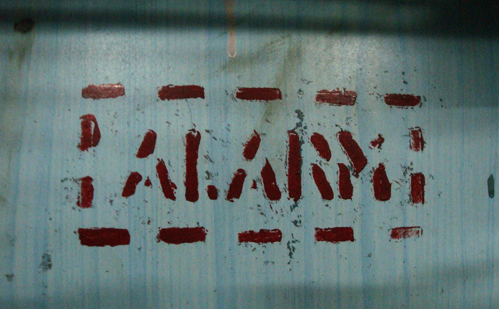
I can figure out the first and last word, it says apatkaleen (something) uplabdh. Then the arrow points to the footboard of the compartment door. A real puzzle, typical of the Indian government or should I say Railway authorities. I can guess it means 'In case of emergency (aapatkaleen) use this (uplabdh)' then the arrow pointing to the footboard. God only knows what it's supposed to point to.
It's an excellent example of the typical contradictions you face everyday in Bombay. The new trains have this cool new speaker system which announces the nearest station in three languages, and at the same time the emergency help services and signage are at this level.
Stray Factory
Check out the logo I've designed for Stray Factory. They're an entertainment collective, who're into a lot of awesome projects, a majority of which are contemporary theater experiments in Chennai.
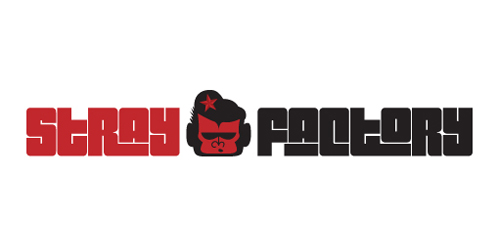
Want to see more? Check out this poster for a play called Dystopia
Update: Stray Factory and Indiblogger are hosting The Great Indian Blogologues to take blogs onto the theater stage for the first time ever. Any post of yours, be it a rant or a rave will be converted into a performance if you win! > Stray Factory is also in the press here.
An absurd evening at The Office
* The sky was that dim dark blue that makes you realize its past seven and you're going to be at work for another hour easy. I was, predictably, still following up on things that were probably not my job due to the fact that we were under-staffed. Making sure the damned Finance department would pay my vendors on time became more important than design work, since without printers you can't get anything done anyway. In this case, 'on time' was long gone and it was quickly turning into paying my vendors 'ever'. Add to that the internet is down (again) and the emails are not working (again). So my numerous replies and follow ups must be done via phone. It was during this process that I had a very strange twlight-like conversation with the HOD of Finance.
[The Finance dept. lost all the bills, and I had sent them copies the second time].
"Hi, FM."
"Hi, yes Aditi"
"I just wanted to tell you that I have sent all the bill copies to the Purchase dept. again. My email is not working, so I just wanted to say that I gave it to them in the afternoon."
"Good, good. okay. Once Mahesh tells me he's recieved it, I will go ahead."
"But he has recieved it, I gave it to him in the afternoon."
"Yes but nowadays I don't trust anybody, not even you, not even Mahesh."
"Okay..."
"I don't even trust myself. Finance dept. is such, the kind of work that we do. You can't be too careful. I don't even trust what I am saying and doing."
"(Laughter) You don't even trust yourself? But how...?"
"I'm telling you. You never know if the bills are recieved, with accounts, with purchase, finance or wherever. Once I know where they are, then I will take action."
"Okay, but I gave them to Purchase today."
"You already told me that. Are you telling me twice because you had to give copies of the bill twice?" (Laughter)
I forced a laugh out of myself. I don't think giving copies of bills again and again is funny at all. "But I'm just telling you FM, that's all."
"Good, good. And once I am certain of what's happening, I will definitely take action." At this point I gave up since I realized we were having a circular conversation.
"Enjoy!" FM continued. This was the most strangest part. I had never had such a long conversation with him, but this was definitely a weird way to hang up.
"Okay... Thanks then." (For nothing, I added in my head).
"Enjoy, enjoy!" he repeated merrily and then hung up. I stared at the phone for a couple of moments, wondering what just happened. Clearly someone was making a fool of me. I looked around, but everyone was seriously typing away at their cubicles. So I shrugged it off and got back to work.
*
Found Art: Entrance/Door
There are a lot of old Tamil and French houses in Pondicherry. Some of the houses have an interesting fusion of Tamil and french architecture. For example, one house I had lived in for about two weeks when I first landed up in Pondy has a ground floor in Tamil style, with a large central courtyard et al, and the first floor in French style with a ballroom to entertain French guests. It was owned by an Indian beurocrat in the days when Pondy was a French Colony. A lot of these houses are in the prime areas right next to the beach. They are taken up and redone as guesthouses and cafe's and restaurants, and they flourish because of all the tourists coming in, or at least, I think they flourish. Anyway, this is a photograph of one such place. This beautiful house has been bought up by a kitchen company!
It was weird, we were walking by and from the outside, we thought it was probably a cafe so we walked in. Instead, its been converted into a store to sell kitchen appliances. It was strange and uncomfortable for some reason, the mismatch between the old house and the commercial kitchen company.
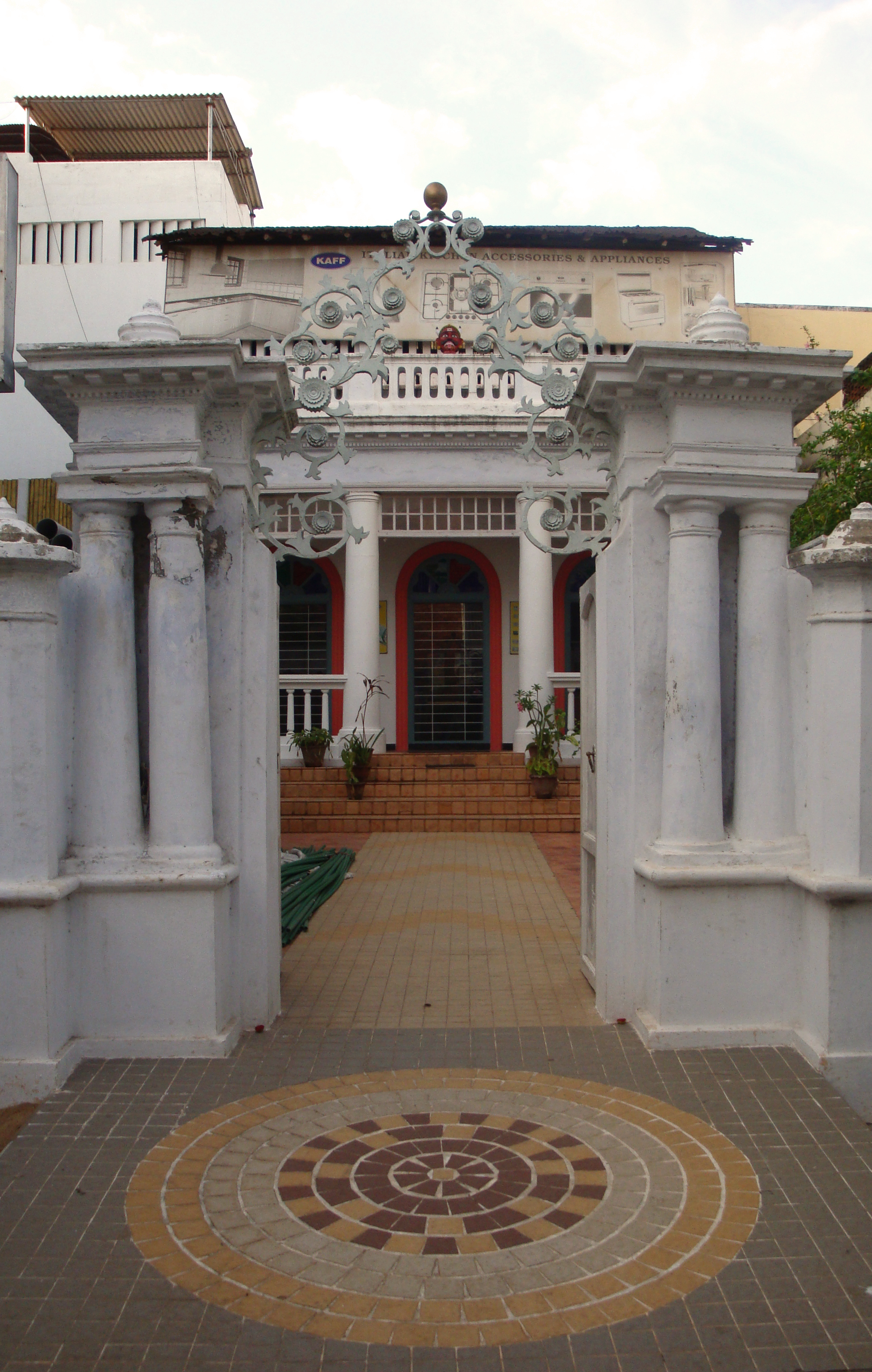
Detail: A beautiful door knob at the entrance -
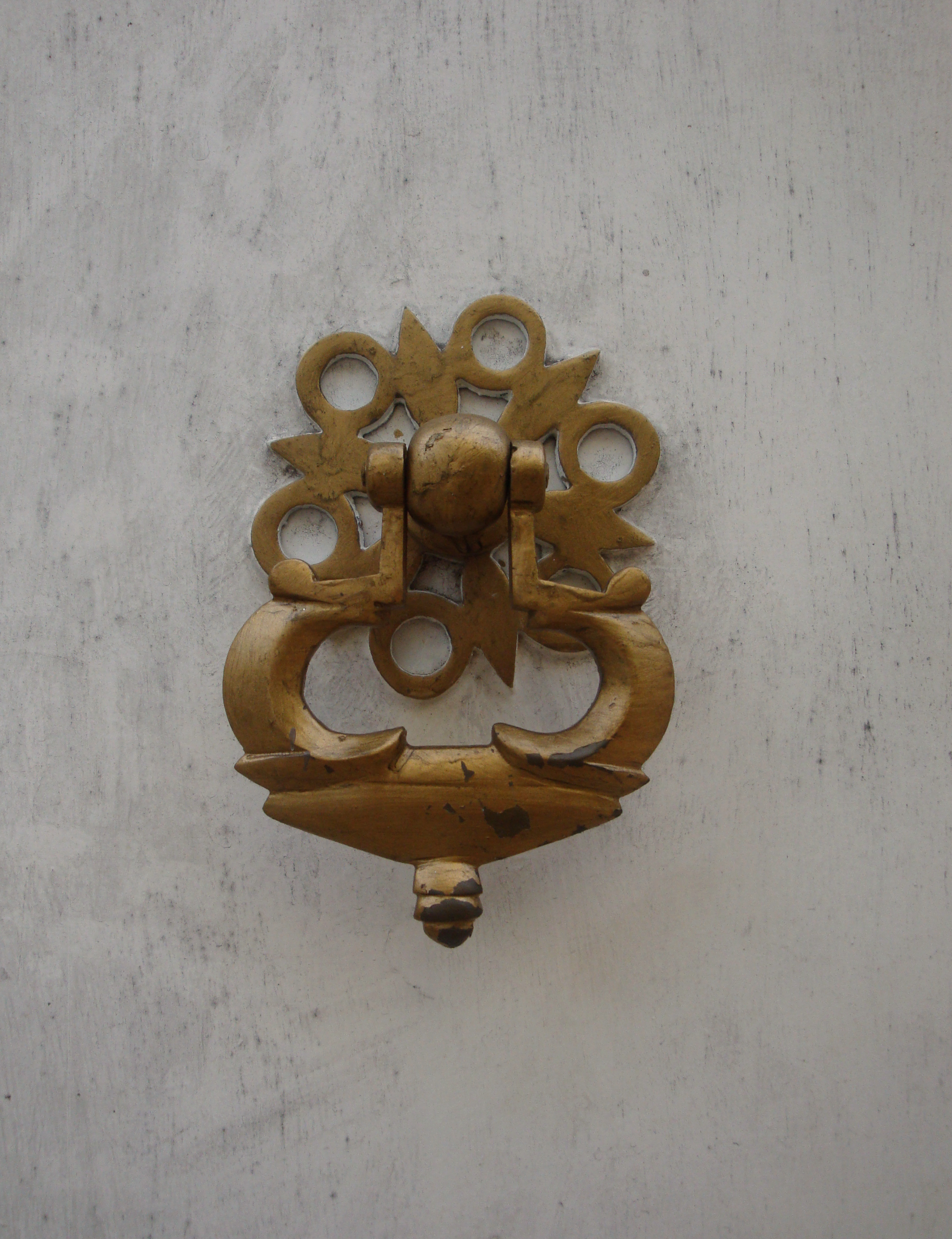
Tamil and French Fusion Architecture
I lived all alone in this old Tamil house for about two weeks while I was looking out for an apartment. Everyone told me it was haunted and all that, but I didn't have any scary experiences (what a surprise ^_^). The house itself was old, old and beautiful. The current owner told me an interesting story about the house. Less than a hundred years ago it was owned by a hi-flying Tamil bureaucrat when Pondicherry was still a French Colony. According to an old cook who has worked in the house for more than sixty years, the name of the previous owner was Ramaswami Chettiyar, his daughters name was Rani and his wife's name was Maragadham. He built the ground floor in traditional Tamil style, with a courtyard and everything, while the first floor is built in French style, with chandeliers, high ceilings and a huge ballroom to entertain French guests. I lived on the first floor, but most of the rooms were closed off. Large parts of the house have been broken down over time to give space for roads and neighbours, only the smaller parts of it remain, and even those are badly maintained. That's probably why some people find it scary.
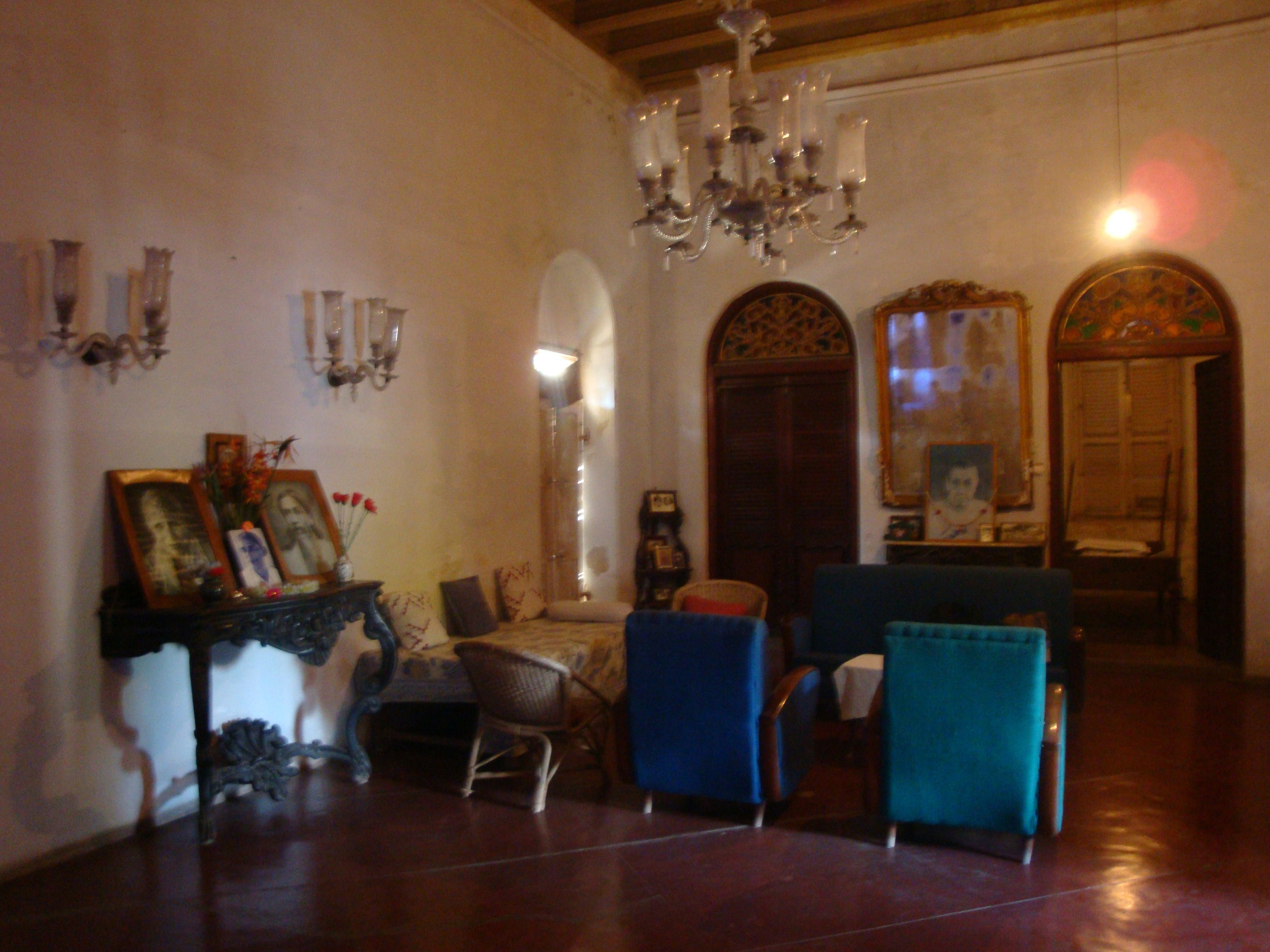
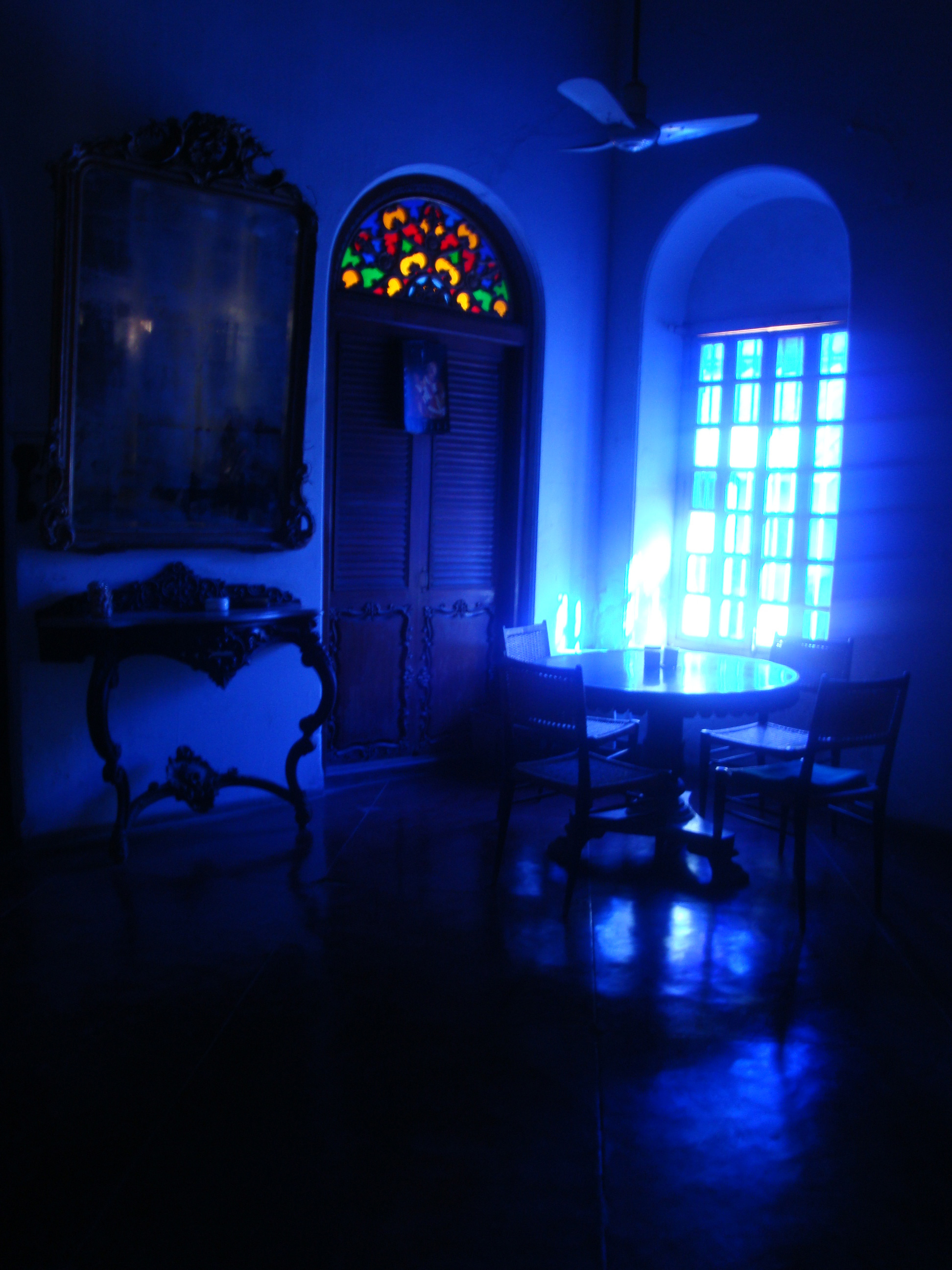
My favourite part of the place; The bathroom door is completely stained glass:
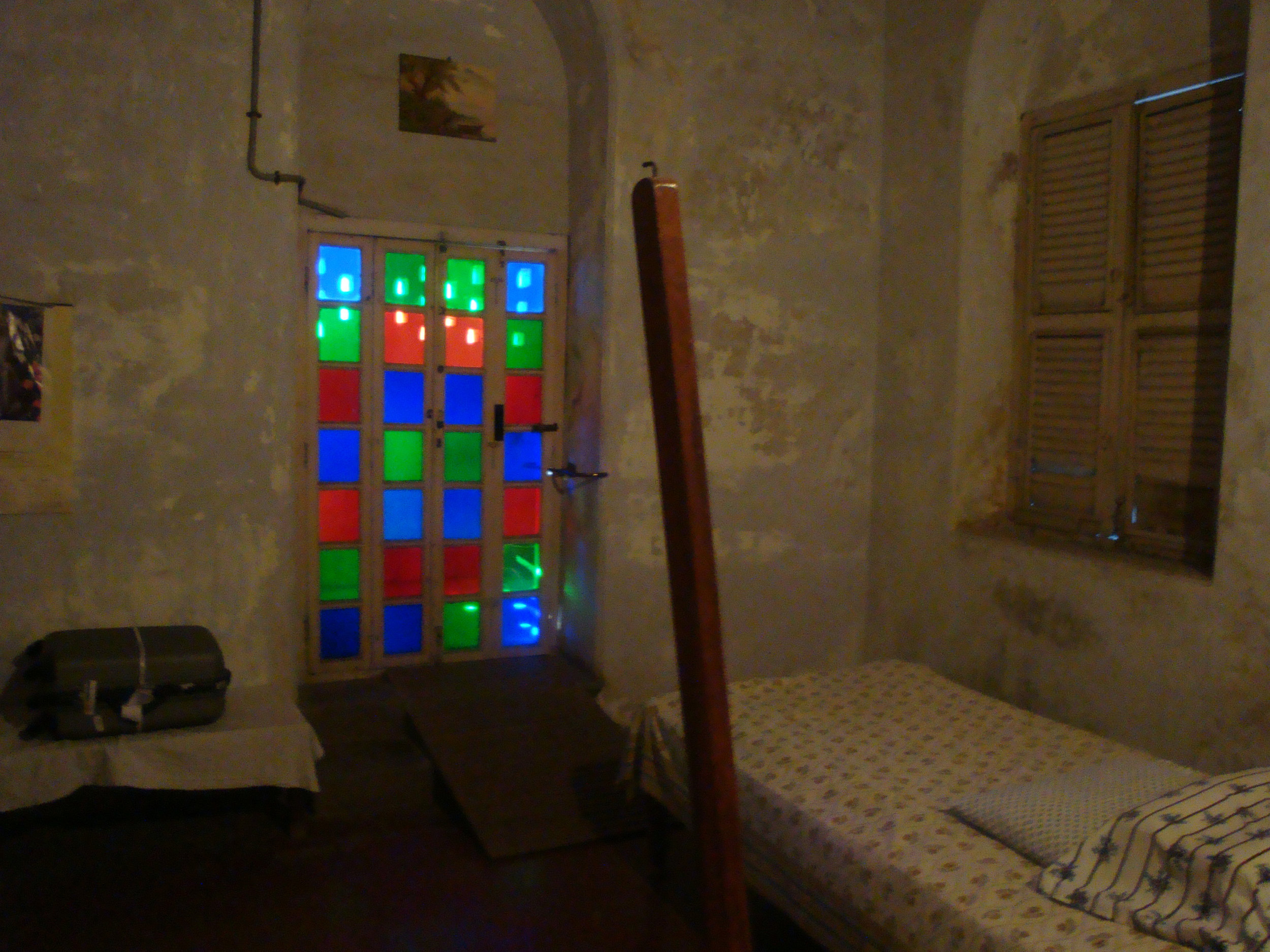
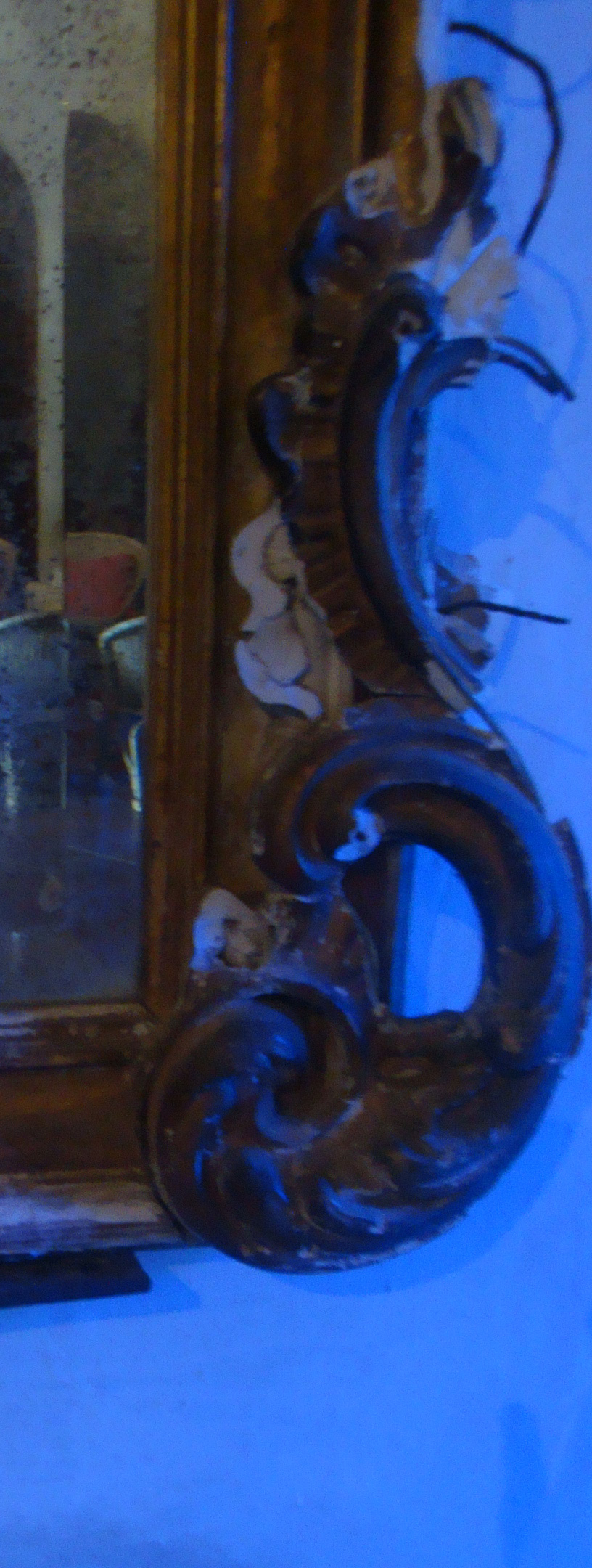 Detail of the giant mirrors on both sides of the drawing room.
Detail of the giant mirrors on both sides of the drawing room.
The stained glass windows really add to the overall effect, and conflict nicely with the traditional, and brightly painted carved wood and absence of glass on the ground floor:
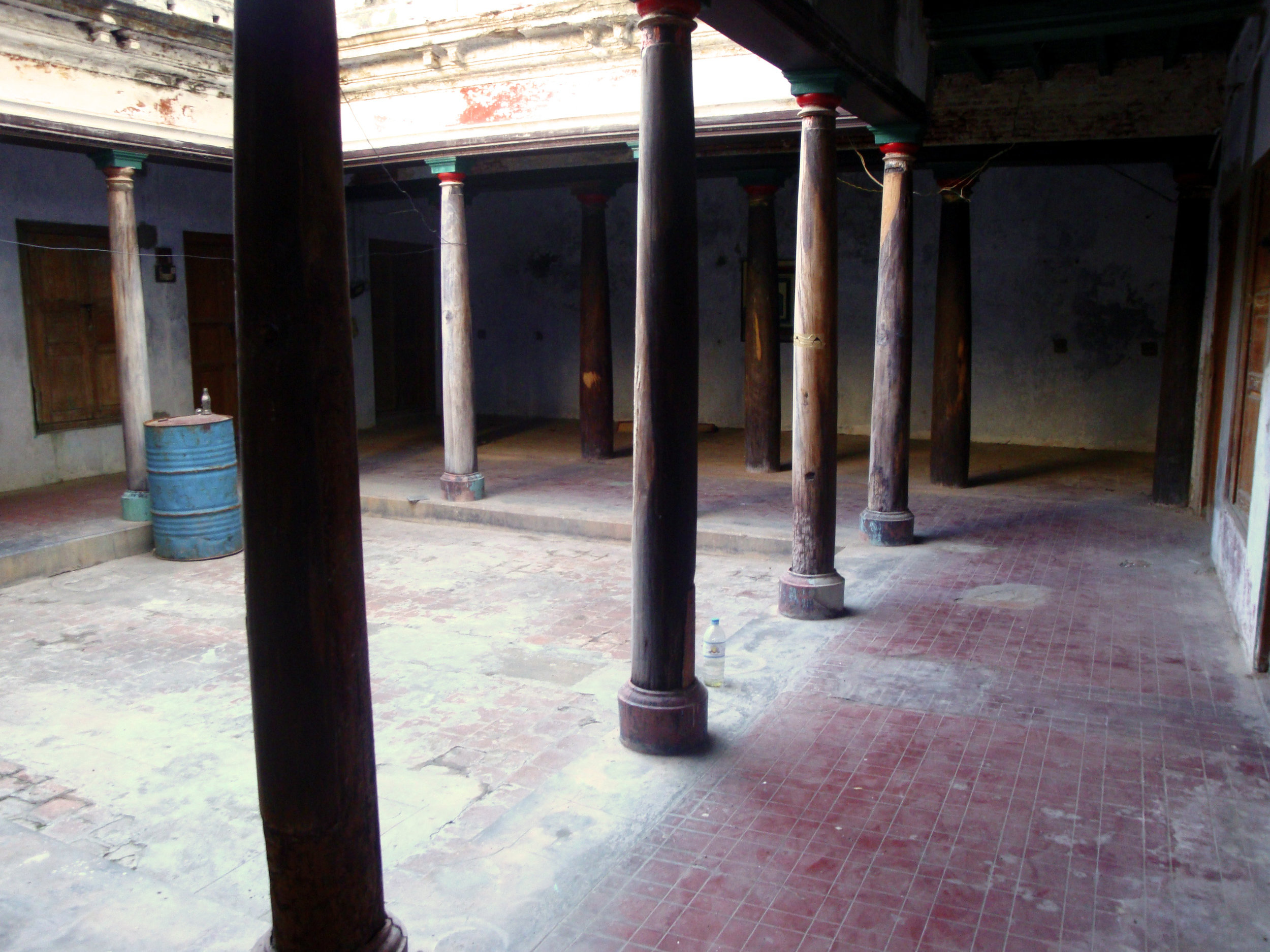
Only some of painted details remain, but these wooden columns were completely painted before falling into disrepair. Unfortunately, this part of the house has also not been maintained.
Here you can see an area where the bright colours are still visible and not completely faded:

Related Posts:
























































